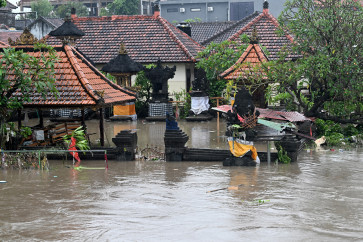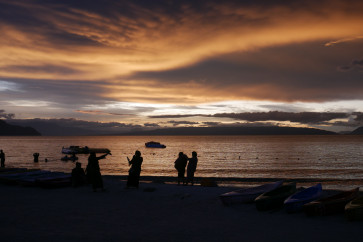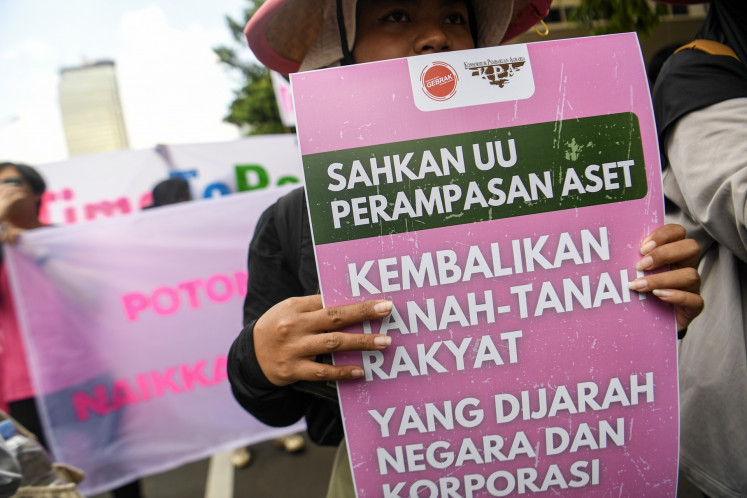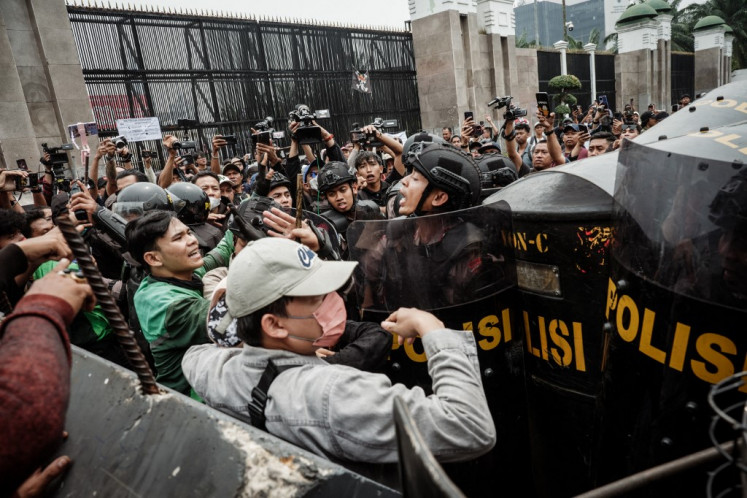Popular Reads
Top Results
Can't find what you're looking for?
View all search resultsPopular Reads
Top Results
Can't find what you're looking for?
View all search resultsRevolutionary approaches sought to recover RI's damaged rivers
Silent stream: A man stands on the edge of the Serayu River in Banjarnegara regency, Central Java
Change text size
Gift Premium Articles
to Anyone
 Silent stream: A man stands on the edge of the Serayu River in Banjarnegara regency, Central Java. Heavy sedimentation in one of the provinceâs largest rivers has led to the emergence of islands in the middle of Serayuâs basin area, with some parts of the river badly silted up.(JP/Agus Maryono) (JP/Agus Maryono)
Silent stream: A man stands on the edge of the Serayu River in Banjarnegara regency, Central Java. Heavy sedimentation in one of the provinceâs largest rivers has led to the emergence of islands in the middle of Serayuâs basin area, with some parts of the river badly silted up.(JP/Agus Maryono) (JP/Agus Maryono)
S
span class="caption">Silent stream: A man stands on the edge of the Serayu River in Banjarnegara regency, Central Java. Heavy sedimentation in one of the province's largest rivers has led to the emergence of islands in the middle of Serayu's basin area, with some parts of the river badly silted up.(JP/Agus Maryono)
Hundreds of participants of the first-ever Indonesian River Congress (KSI) have called on both the government and the public to jointly take an integrated and revolutionary approach to save the country's major rivers and river basin areas (DAS) from severe contamination, sedimentation and other environmental issues.
The call was made through the so-called Serayu Declaration, which was jointly drafted by congress participants and announced during the congress' closing ceremony on Sunday afternoon.
'Rivers in Indonesia are in a critical condition. Concrete efforts must be made to save them,' said South Sulawesi delegate Muhammad Yusron, who represented his fellow participants in reading out the declaration.
The announcement of the declaration took place in the Serayu River basin area in Banjarnegara, Central Java, and was undertaken concurrently with the Parak Iwak (Fish Harvest) festival, the biggest side event held during the four-day congress.
During the congress, more than 600 people representing government institutions, NGOs and academic institutions that are concerned with river and DAS management gathered to share their ideas and solutions to save Indonesian rivers that are struggling with various environmental problems, particularly those triggered by human activities.
Speaking to The Jakarta Post on Monday, KSI secretary-general Agus Gunawan Wibisono said many major Indonesian rivers were currently in very poor condition.
'If I may say, they are completely destroyed [and it is] extremely worrying. Serious and quick handling is needed very urgently to save them,' he said.
Among the major rivers that have been considered as 'damaged and dying', according to Agus, are the Ciliwung, Citarum, Serayu and Bengawan Solo ' all on Java Island ' as well as the Mahakam and Kahayan in Kalimantan and the Siak and Kampar in Sumatra.
Agus said the rivers were considered damaged as they are experiencing a long list of problems, including pollution, floods, extreme drought, biodiversity loss, sedimentation and riverbank damage.
'Many people nowadays are losing respect for rivers. Thus, rivers become sources of disasters instead of sources of livelihood,' he said.
Agus said conventional ways of saving damaged rivers could no longer be implemented to improve the condition of these rivers.
'Such damage will need a revolutionary approach to heal by, for example, involving all stakeholders, including the government and people living around DAS, in river management,' he said.
Separately, Central Java Governor Ganjar Pranowo said uncontrolled erosion along the banks of the damaged rivers in the region would potentially trigger sedimentation in a number of hydro power dams in the province. This, he said, would gradually reduce the capacity of the dams to retain water and trim down their potential power capacity.
'The Serayu River, for example, has 1.28 million cubic meters of sediment, while the Gajah Mungkur Dam [accumulates] 7 million cubic meters of sediment per year,' Ganjar said, referring to one of the country's largest dams that is located in the Central Java regency of Wonogiri.









